It’s easy to call for tree service when you notice one of your trees doesn’t look well, but did you know that a tree that appears healthy can actually be on the brink of failure, too? This month we’re highlighting some key insights from our in-house expert, ISA-Certified Arborist Greg Irwin.
As a specialist in risk and hazard assessment, Greg’s mindset is always, “safety first”.
He shares, “Often homeowners don’t realize there are hidden hazards that have a higher potential to happen when a tree looks good, because there aren’t outward signs of illness or damage. A tree can look nice and healthy to an untrained eye and still fail (or have main sections fail) based on growth structure, attachment, and the way it has been previously pruned in the past.”
Species-Specific Issues
Several tree species are prone to failure because of their particular growth habits. If you’re unfamiliar with the risk factors, it’s more likely you’ll face long-term failure issues in main sections of your tree.
Flowering Pear
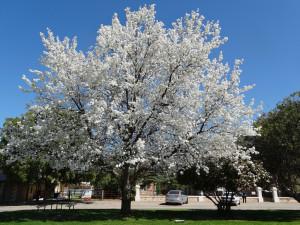
These towering beauties can harbor hidden danger when they’re allowed to establish without regular, skilled maintenance through pruning and having their canopy contained. They commonly form poor attachments, one of several genetic issues naturally occurring in the species.
While these issues aren’t preventable, they can be successfully controlled in a variety of ways if addressed when the tree is young (5-10 years old). Taking action early on eliminates future headaches and also causes less stress and effects on the tree.
Red Sunset Maple
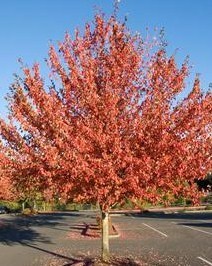
Red Sunset Maples are a favorite for their consistent, dramatic fall color. However, due to an all-vertical growth habit, it’s not uncommon for a weak attachments to become a high failure risk in mature trees. Like the flowering pear, early identification in young trees is critical to allow proper diagnosis and treatment. A certified arborist like Greg is rigorously trained to examine the multiple factors that come into play in each case and make the right call for safety and the health of the tree.
Leyland Cypress
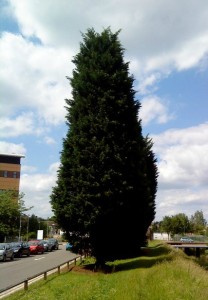
The mighty Cupressus × leylandii tops Greg’s list as the #1 evergreen that he and the Frontier Tree Service crews see split apart or even uprooted entirely due to winter failure–more than any other tree in the area.
Again, the main problem arises from genetics with this tree’s growth structure: vertical, very tall, and heavy-limbed. While the root system is wide, it’s also shallow and prone to retaining a lot of water (pushing the roots up to the soil’s surface). As the tree gets larger it doesn’t take a lot to tip it over. Yikes!
There’s good news, though. Young Leyland Cypress trees do well when they’re retrained as hedges. With early intervention and consistent maintenance, retraining reduces risk of failure around your home. The Leyland cypress performs well in this role, as it’s hardier than arborvitae and will flourish as a robust screen through its maturity.
Risky Roots
Attachments aren’t the only issues that can play a role in tree failure. In landscapes with a high water table, tree roots can be forced up towards the soil’s surface instead of spreading out and away. With heavy wind, the entire tree may be uprooted due to this instability.
It’s important to note that root issues like these are a leading cause of tree failure. The trained eye of a certified arborist like Greg takes multiple aspects into consideration when assessing risks and hazards around your home.
Safe Solutions
Greg reminds us, “every tree in every location is different. We always diagnose case-by-case to determine the need.” Pruning and cabling are two common solutions when a tree is able to be recovered.
Pruning
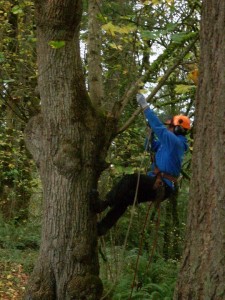
Pruning, which has several definitions, essentially involves removing plant parts to improve the health, landscape effect, or value of the plant. The Texas AgriLife Extension Service emphasizes the importance of skilled pruning:
“The old idea that anyone with a chainsaw or a pruning saw can be a landscape pruner is far from the truth. More trees are killed or ruined each year from improper pruning than by pests.” (You can read more in-depth on pruning here.)
Cabling
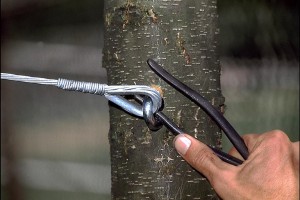
Cabling assists the tree in supporting itself during inclement weather, can strengthen a weak crotch, or raise lower hanging branches to the desired height. Like pruning, there are multiple approaches to cabling.
Greg states, “Cabling needs to be done by someone with experience. There’s a lot to know: where to cable, how to position, what type of cable to use depending on the calculated size/stress load so you know whether or not what you’re using is strong enough.”
If it’s been awhile since you’ve had your trees evaluated for these hidden hazards, give us a call to set up an evaluation. Greg and team will perform a thoughtful, thorough examination to save you from headaches and failures with the best knowledge and resources available. We are licensed, bonded, and insured, and are committed to using best practices set forth by the International Society of Arboriculture (ISA).

ISA certified arborist, Greg Irwin
*Why Hire a Certified Arborist?
An arborist, by definition, is an individual trained in the art and science of planting, caring for and maintaining individual trees. Arborists are knowledgeable about the needs of trees and are trained and equipped to provide proper care. Certified Arborists are individuals who have achieved a high level of knowledge and experience and pass a comprehensive examination developed by some of the nation’s leading experts on tree care. Certified arborists must adhere to a stringent code of ethics and continue their education to maintain their certification. Learn more about certified arborists and tree safety at Trees are Good and ISA.

